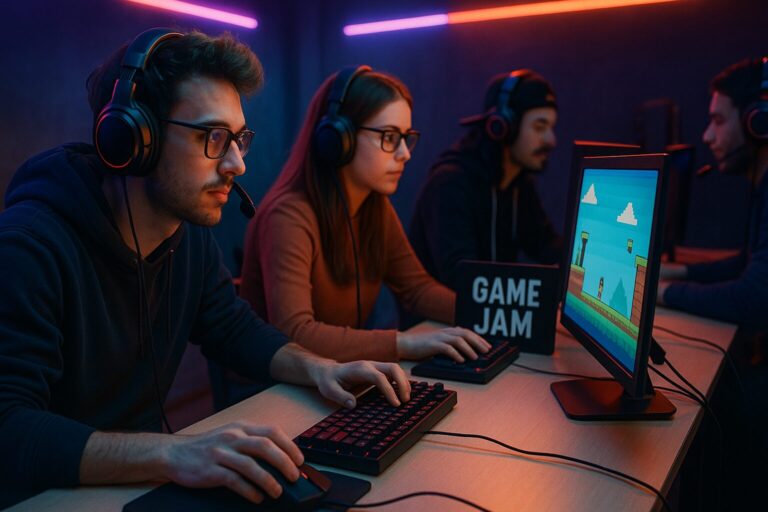
Game development might seem intimidating at first, especially with all the jargon, tools, and code flying around. But here’s the truth: if you can build a basic website or understand how apps work, you can absolutely start making games. This article will walk you through the key concepts of game programming and design—no fluff, no filler.
1. Game Design vs. Game Programming
First, let’s clear this up:
- Game Design is about what the game is—how it plays, what makes it fun, the rules, story, mechanics, and flow.
- Game Programming is about how the game works—writing the code that brings those ideas to life.
You need both. You can start with either, but understanding both sides—even at a basic level—makes you a better developer.
2. Game Loops: The Heartbeat of a Game
Every game runs on a loop that does three main things:
- Process input (what the player does)
- Update the game state (what changes)
- Render the output (what you see)
This loop runs constantly—usually 30 or 60 times per second. If you’re using a game engine like Godot, Unity, or Unreal, it handles most of this for you, but it’s crucial to understand the concept.
3. Basic Game Architecture
At a minimum, games include:
- Scenes or Levels – Where your game takes place
- Actors or Objects – The things that move and interact
- Assets – Art, sound, animations
- Scripts – Code that tells objects what to do
You’ll often use object-oriented programming (OOP) concepts like classes, inheritance, and components.
4. Core Concepts in Game Programming
Here’s what you’ll deal with most often:
- Input Handling – Detecting player actions (keyboard, mouse, controller)
- Physics – Movement, gravity, collisions
- State Machines – Managing different behavior modes (e.g., idle, jumping, shooting)
- Events & Triggers – When something happens, do something else
- Saving & Loading – Keeping track of progress
5. What Makes a Good Game Design?
A game doesn’t need fancy graphics to be great. Focus on:
- Core Mechanics – The main action the player repeats
- Feedback Loops – Rewards for progress, consequences for failure
- Challenge & Mastery – Easy to learn, hard to master
- Player Agency – Meaningful choices
- Fun – Seriously, if it’s not fun to you, scrap it and try again
Prototype your ideas early. You’ll know quickly if it’s worth building further.
6. Tools to Get Started
- Godot (Free, beginner-friendly, GDScript or C#)
- Unity (Popular, C#, massive community)
- Unreal Engine (Visual scripting with Blueprints or C++)
- PICO-8 (Great for learning and retro-style games)
- Tiled (For 2D level design)
Start small. Make a Pong clone. Then a platformer. You’ll level up fast.
7. Final Thoughts
You don’t need a CS degree. You don’t need a $3,000 PC. And you definitely don’t need to wait until “you’re ready.” You learn by doing.
Build ugly games. Break your code. Keep going.
Every pro dev once built something totally broken and weird. It’s part of the process. Stick with it.
Want beginner tutorials, tools, and tips delivered straight to your screen? Bookmark NoobGame.dev—because game dev doesn’t have to be scary.






